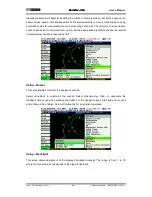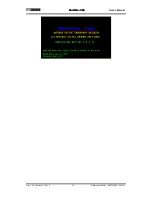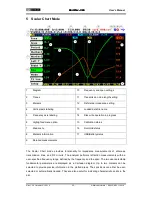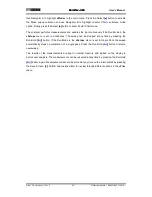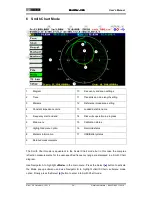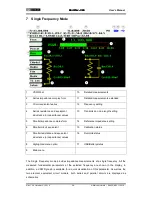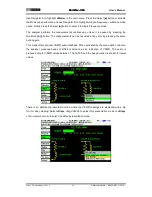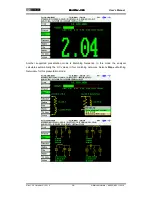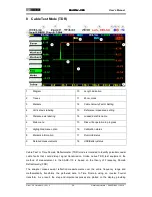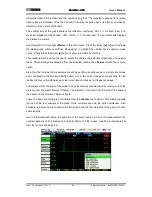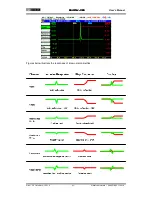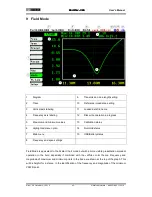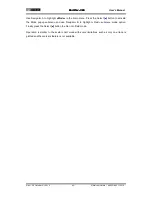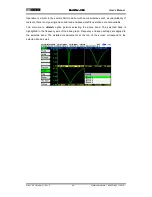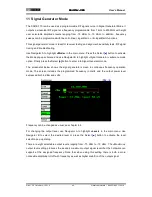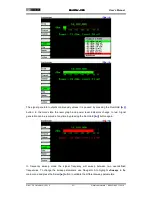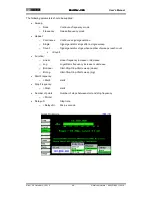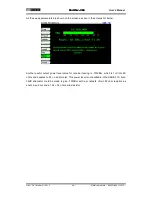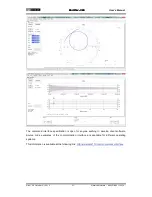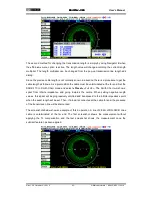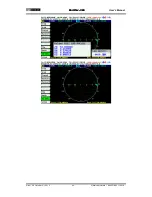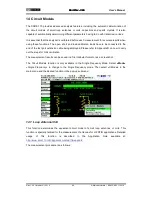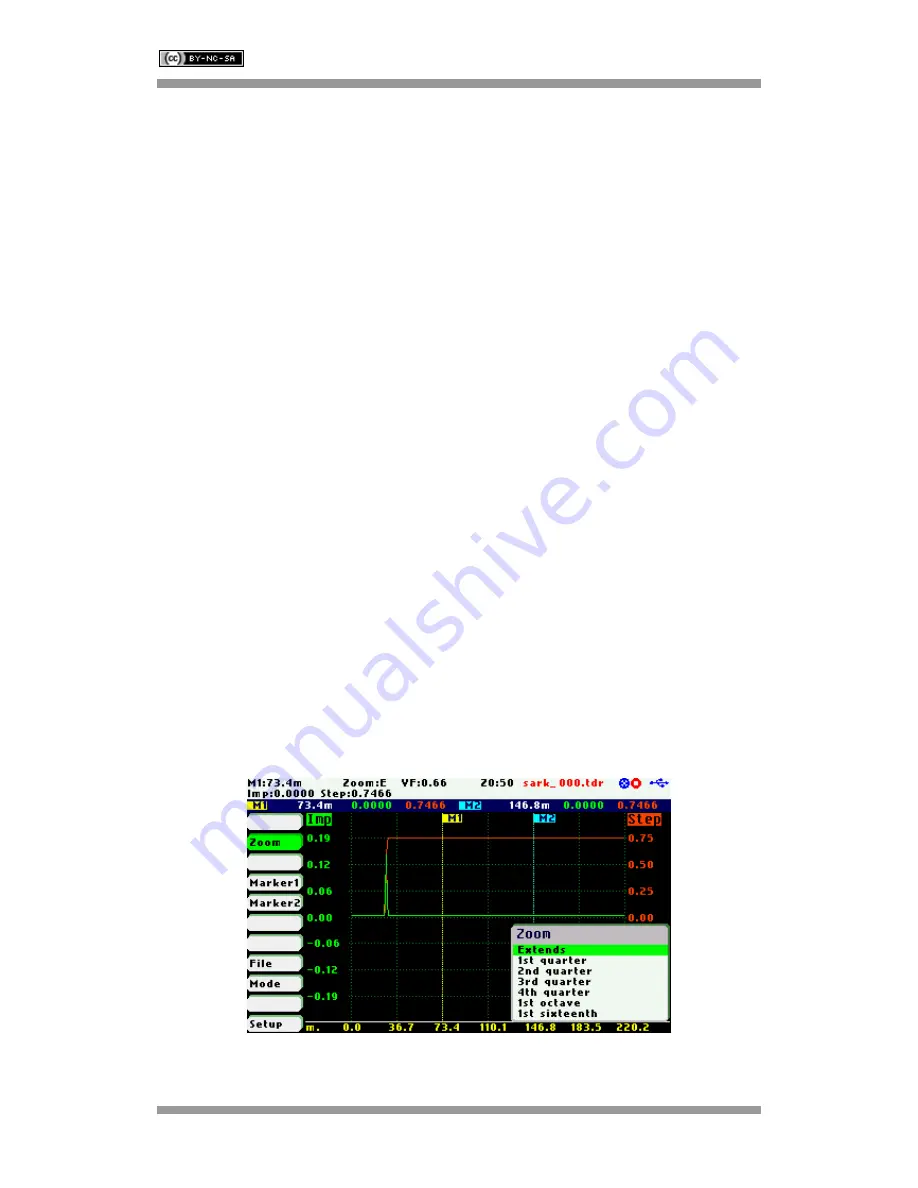
SARK
SARK
SARK
SARK-
-
-
-110
110
110
110
User’s Manual
Rev 1.2.6 October 3
rd
, 2015
- 40 -
© Melchor Varela – EA4FRB 2011-2015
information about the location and the nature of any fault. The impulse response trace (green
trace) gives an indication of the fault location. The step response trace (red trace) provides an
indication of the nature of the fault.
The vertical axis of the graph displays the reflection coefficient: Rho = -1 for short load, 0 for
matched impedance load (ZLoad = Z0), or Rho = +1 for open load. The horizontal axis displays
the distance in meters.
Use Navigator A to highlight «Mode» in the main menu. Press the Select [
■
] button to activate
the Mode popup submenu and use Navigator B to highlight the «Cable Test» submenu mode
option. Finally press the Select [
■
] button to enter into Cable Test mode.
This measurement requires the user to select the cable’s characteristic impedance and velocity
factor. These settings are obtained from the selected cable in the «Setup»«Cable Type» menu
option.
As in the other modes, the measurements can be performed continuously or in single shot mode
and controlled by the Run/Hold [
►
||
] button, but in this case it takes some seconds for the
results to show on the display due to the time it takes to make a full frequency sweep.
The distance from the start of the cable to any discontinuity may be found by moving one of the
markers over the discontinuity of interest. The distance of the fault from the start of the cable is
then shown in that marker’s distance figure.
There is a basic zoom feature controllable from the «Zoom» menu option. This allows zooming
into one of the four quarters of the graph or the complete span via the option «Extends». Also
available is a zoom option to extend the first octave and the first sixteenth of the graph for short
cable lengths.
See in the screenshots below the operation of the zoom function in which the measurement of a
coaxial cable line of 27.5 meters and Velocity Factor of 0.66 in open condition (unterminated at
the other end) is shown below:



